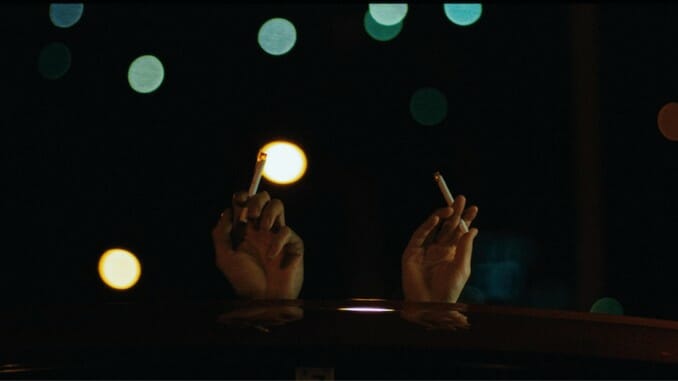How Drive My Car Uses Beckett and Chekhov to Redefine Storytelling

When we first meet Drive My Car‘s Yusuke Kafuku (Hidetoshi Nishijima), he is putting on a production of Samuel Beckett’s absurdist tragicomedy Waiting for Godot, a play that follows two men as they anticipate the arrival of an enigmatic and ineffable figure named Godot, who never ends up showing his face. Perhaps Godot is a work about uncertainty, disappointment, madness; or perhaps it is about hope, or God, or war. The truth is, when he was alive, Beckett famously refused to provide a definitive answer for what Godot actually represents, and now, 30 years after his death, the question remains on our minds.
But, let’s face it: That elusiveness is exactly what’s so fun about the play. Godot is a transformer. A chrysalis bursting with possibility. A Freudian ideal that says so much more about his audience than about himself or anyone else. And for Yusuke, Godot represents the possibility of storytelling. Storytelling is integral to Yusuke’s life. It of course plays a large role in his fruitful career of staging plays, and he even goes to great lengths to play into the medium’s possibilities by staging multilingual versions of classic works. But storytelling is also the principal connective tissue between him and his wife, TV writer Oto (Reika Kirishima), who weaves fantastical yarns while they have sex, coming closer to a fully developed story with every encounter. When Oto unexpectedly dies one night of a brain aneurysm, Yusuke’s relationship to storytelling radically shifts. He is no longer Godot’s Vladimir or Estragon, standing on a country road, bursting with possibility. Instead, he now only knows how to look backwards: Back at the idyllic life he had with his wife that was shattered by premature death, and at the questions he never asked her about her secret lovers.
And so when, two years later, Yusuke decides to stage an adaptation of Anton Chekhov’s realist play Uncle Vanya, the pivot makes perfect sense as a reflection of his storytelling career’s trajectory. Vanya follows a quartet whose interlaced lives lead the titular character to become hyper-aware of his own mortality and regret. In this sense, Vanya is something of an inverse of Godot—the former being a story permanently facing backward, while the latter peers inquisitively forward.
Yusuke’s new relationship with his own existence doesn’t just manifest through his art. Before he starts rehearsing Vanya in Hiroshima, the company he is with assigns him a driver to shuttle him to-and-fro in his beloved bright red Saab. The driver in question is Misaki Watari (Toko Miura), a quiet young woman with whom, despite Yusuke’s initial resistance, he discovers a genuine bond. As the two drive through Hiroshima, they discuss their individual relationships with loss. Yusuke tells Misaki about the death of his wife, and, a couple decades prior, the death of their young daughter. Misaki tells Yusuke about her abusive mother, whom she allowed to die when their house was crushed in a landslide—a choice which she now deeply regrets.
In a film chock-full of stages and productions, the Saab turns out to be the central setpiece. It’s worth noting here that the Haruki Murakami short story upon which the film was based takes place almost entirely within the confines of this car. Where Ryusuke Hamaguchi’s adaptation weaves in episodic meditations on our protagonist’s domestic and professional life, Murakami allows all of the information required for us to understand Yusuke—and for Yusuke to understand himself—to manifest as a conversation with a relative stranger.
-

-

-

-

-

-

-

-

-

-

-

-

-

-

-

-

-

-

-

-

-

-

-

-

-

-

-

-

-

-

-

-

-

-

-

-

-

-

-

-








































